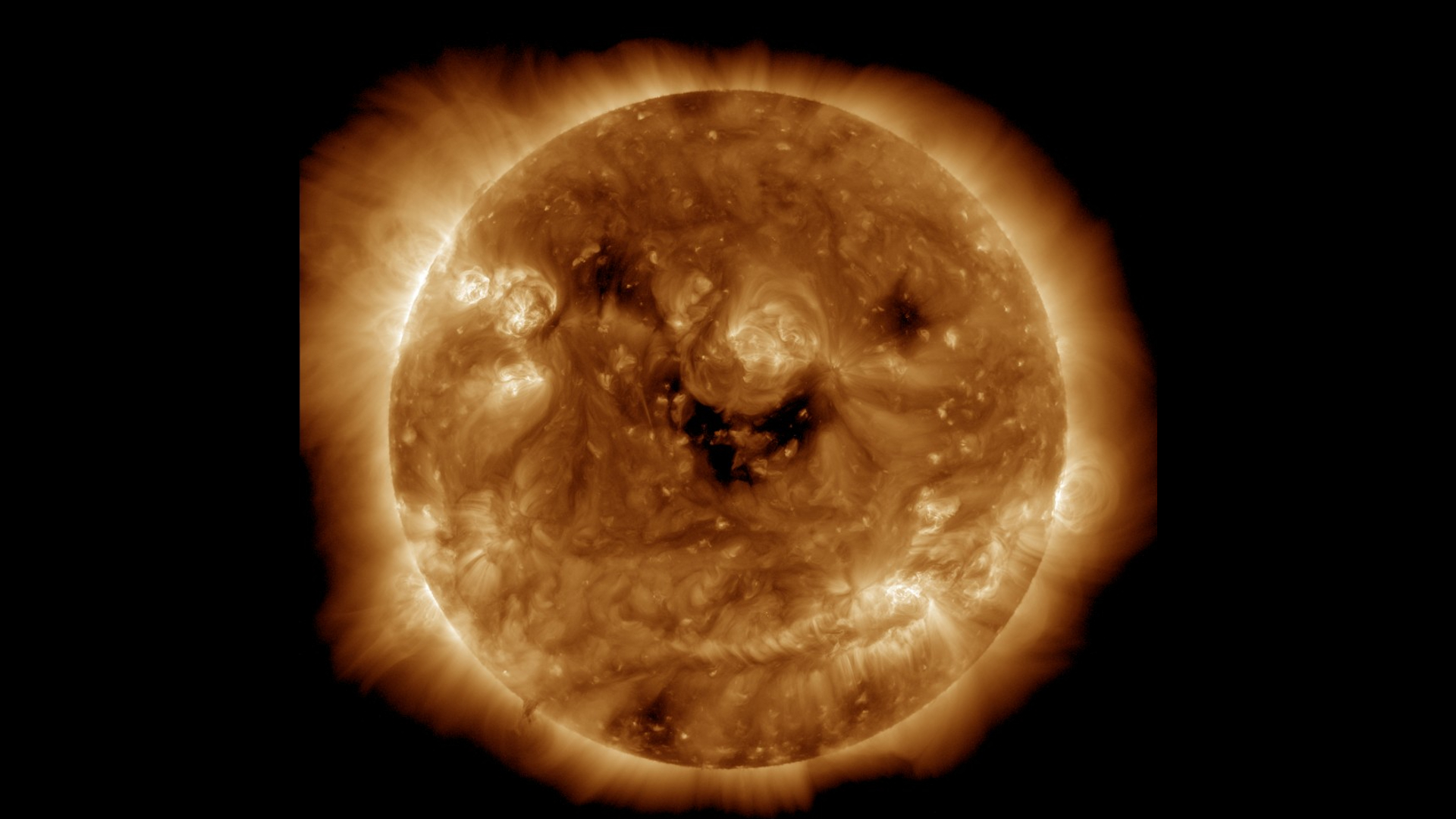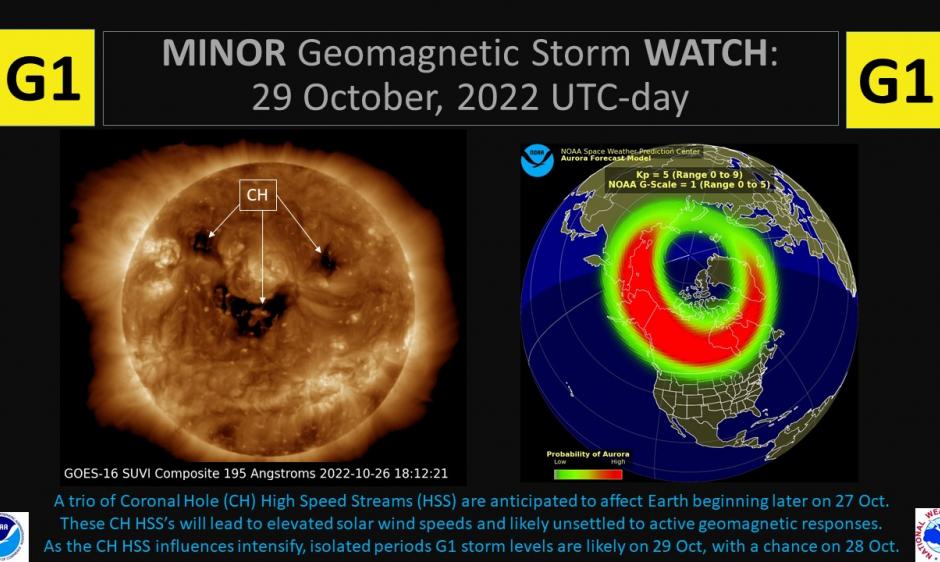The sun's sinister 'smile' has Earth on solar storm watch this Halloween weekend
It's no laughing matter.

The sun appears very 'happy' today in NASA's latest Solar Dynamic Observatory (SDO) images. But don't be fooled by its cheery appearance — that 'face' is spewing vast streams of solar wind that could trigger a solar storm on Earth, albeit a rather mild one.
The three dark patches that make the sun's ' face' are coronal holes — regions of open magnetic field line structures that allow solar wind to readily escape instead of looping back on themselves. Torrents of solar material can surge out of coronal holes at speeds of up to 1.8 million mph (2.9 million kph), according to the Exploratorium, a science museum in San Francisco. The regions appear dark because they are cooler and less dense than the surrounding plasma regions.
Earth is currently in the firing line of the trio of solar wind streams, which could hit our planet in the next few days. In response, NOAA's National Weather Service has issued a G1 (minor) geomagnetic storm watch for Saturday (Oct. 29).
Related: Satellites can disappear in major solar storms and it could take weeks to find them
A G1 geomagnetic storm has the potential to cause minor fluctuations in power grids and increase auroral activity at the poles.
More extreme solar storms like the Carrington Event, a colossal solar storm that occurred September 1859, disrupted telegraph services all over the world and triggered auroras so bright and powerful that they were visible as far south as the Bahamas.

Solar activity is expected to ramp up as the sun moves towards the most active phase of its roughly 11-year-long solar cycle. It is predicted to reach solar maximum — the period of maximum activity — in 2025.
Get the Space.com Newsletter
Breaking space news, the latest updates on rocket launches, skywatching events and more!
The sun makes for an interesting skywatching target but remember, NEVER look at the sun without appropriate equipment. If you want advice on how you can observe the sun safely and what solar targets you can look out for, check out our guide on how to observe the sun safely.
Follow us on Twitter @Spacedotcom or on Facebook.
Join our Space Forums to keep talking space on the latest missions, night sky and more! And if you have a news tip, correction or comment, let us know at: community@space.com.

Daisy Dobrijevic joined Space.com in February 2022 having previously worked for our sister publication All About Space magazine as a staff writer. Before joining us, Daisy completed an editorial internship with the BBC Sky at Night Magazine and worked at the National Space Centre in Leicester, U.K., where she enjoyed communicating space science to the public. In 2021, Daisy completed a PhD in plant physiology and also holds a Master's in Environmental Science, she is currently based in Nottingham, U.K. Daisy is passionate about all things space, with a penchant for solar activity and space weather. She has a strong interest in astrotourism and loves nothing more than a good northern lights chase!









